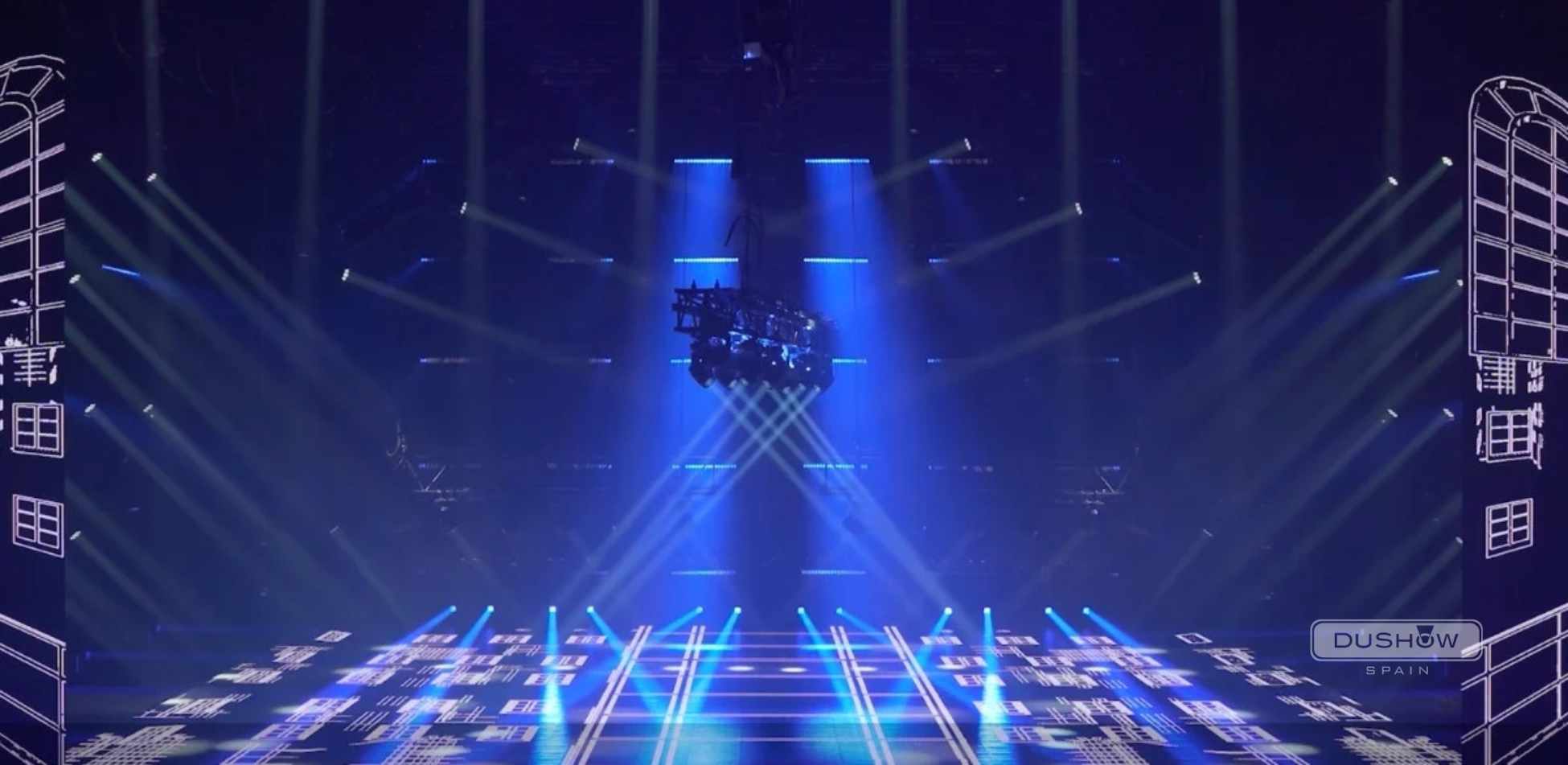Dushow Spain is now Novelty Spain
Rigging: what does it mean for an event?
You’ve probably heard the word “rigging” at events, or seen it on a quote. But do you know exactly what it means? Or how to use it for the organization of your event?
If you want an in-depth understanding of rigging at events, and the advantages it can bring, keep reading!
So what is the rigging at an event?
In the context of events, the word “rigging” refers to the fastening methods and systems used to safely hang different components and equipment.
Making the most of the event space is one of the first challenges you’ll face. The best way to do so is often to hang equipment from different structures. This could include things like lights, speakers, screens, cables, banners, curtains or any other object or (why not?) person you need.
These structures are commonly called “trusses”. They are suspended from different rig points. The size of the truss will depend on the space, and partly, the weight restrictions of the rig points and the design.
Now you’re probably asking yourself, so what are rig points? Simply put, this is the name given to the attachment or suspension points.
Some venues where events are held already have specific points on the ceiling from which equipment can be hung. These points are adjusted and maintained by venue management to guarantee that weight limits (and therefore, safety) comply with the required specifications.
That is why the venue you hire for your event will have what is known as a rigging plot, a plan that shows where those points are.
How are trusses fastened to the rig points? If you’re an event expert, you’ll know the answer. But if you’re just getting started in this fascinating world, we’ll clue you in: it’s the motors.
In addition to fastening the truss to the rig point, the motors enable the technical staff to lower the structures to affix equipment, and raise them once everything is properly installed.
While it is true that rigging in events usually comes with a high price tag, if your priority is event safety, remember that the equipment will be “flown” over your audience’s heads. That’s why we don’t recommend trying to economize in this part of your budget.
Why is rigging so important?
Rigging is a fantastic resource to enhance your event in countless ways. But without a doubt, the most important contribution it makes is in safety. Anything that is hung over people’s heads, no matter how small, can entail a major risk.
That is why rigging is arranged with the aim of optimizing the use of the venue, but always prioritizing event safety above all.
As organizer of the event, you have to pay special attention to these safety measures and ensure they are complied with. If your venue hasn’t mentioned them, it should definitely raise a red flag.
What does rigging offer in an event?
If it is an event in a small room, the equipment can usually be installed with ground supports, if necessary.
But when it is a larger event (conventions, trade fairs, congresses, concerts, etc.), rigging is an excellent resource with which to achieve proper distribution of equipment, without blocking or taking up precious space.
When can you use rigging?
In addition to optimizing space usage, clearing areas and enabling the audience to see everything more clearly as nothing on the floor obstructs their view, with rigging you can generate a surprise effect, by installing components at heights to catch attendees’ eyes, and direct their attention upward.
At the technical level, you can also use rigging if you want to optimize angles for video, sound and light distribution, or for example, keep the lights from shining directly into the eyes of the people sitting in front of a stage.
Next we’ll go through some of the usual equipment. But don’t let this list be a limit to your imagination!
- Audiovisual resources (such as speakers, screens, projectors, lights and electrical distribution).
- Banners, advertising, standees and any other kind of branding material.
- Decoration (ornaments, chandeliers, balloons, etc.).
- People. That’s right! For acrobatic shows, the resource used for the safety of people in the air (and on the ground) is rigging.
What else can be done with rigging at events?
For an even greater range of possibilities, remember that the objects don’t have to be fixed in one place.
To enhance the effect of suspended objects, the technical crew can put them in motion.
Yes, objects can also move in any direction through manual or motorised pulleys. The possibilities they offer are limitless.
Keys to success with rigging at your event
Having a reliable AV partner, who has a dedicated rigging department, and offers you specialized, experienced professionals, is essential.
Let them guide you throughout the entire process; from the inspection to the site where your event is to be held, including the advising, design, weight calculation, static and dynamic loads, to work load limits and structural calculations.
What’s more, let them certify the rigging for your event, complying with all safety rules.
This way, you’ll have the peace of mind you need to plan your event, and your audience will enjoy the advantages that come from this resource. But above all, and most importantly, they will do it with safety.
This article was first published in Dushow Spain, you can read the original Spanish version here.





